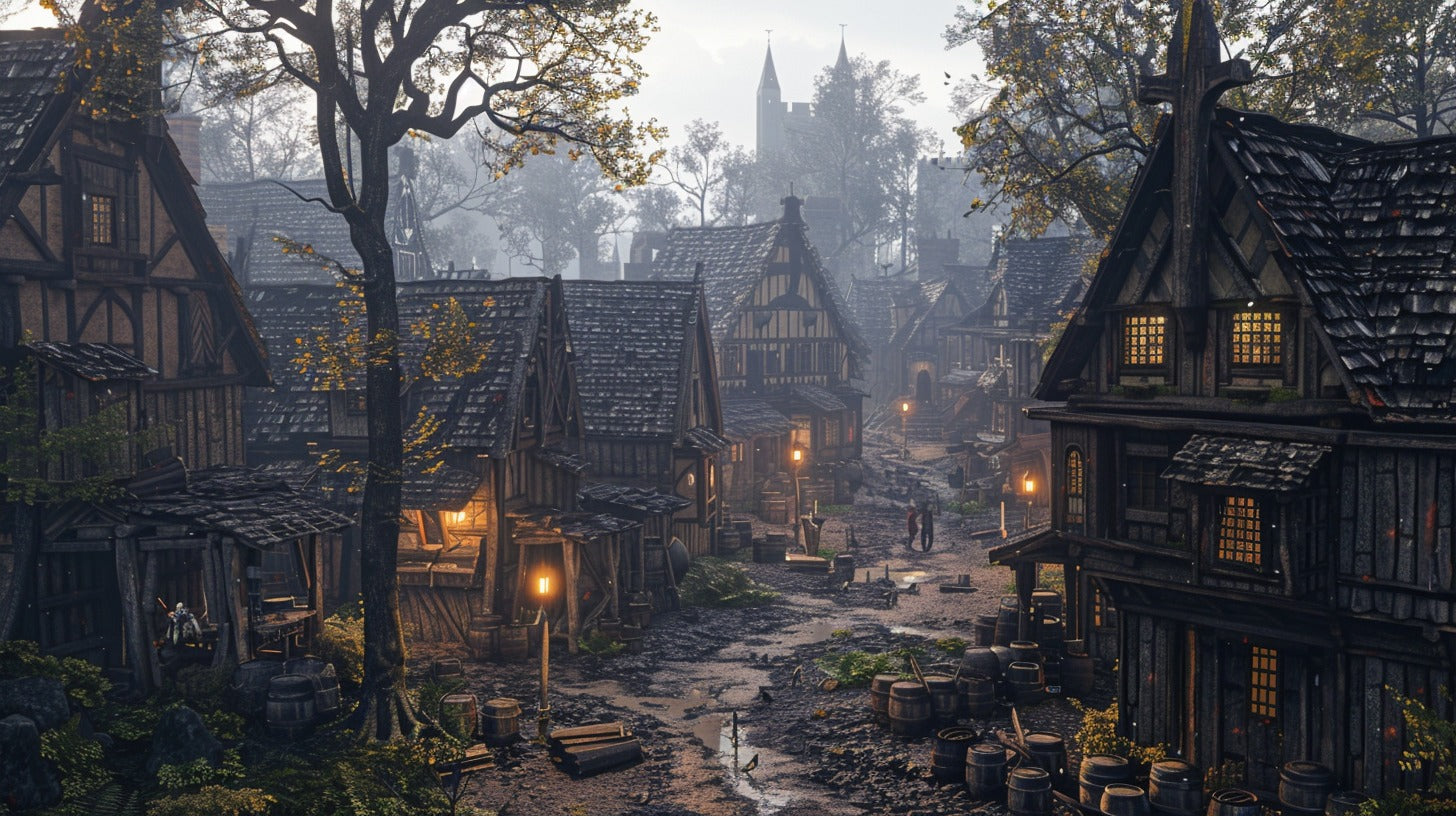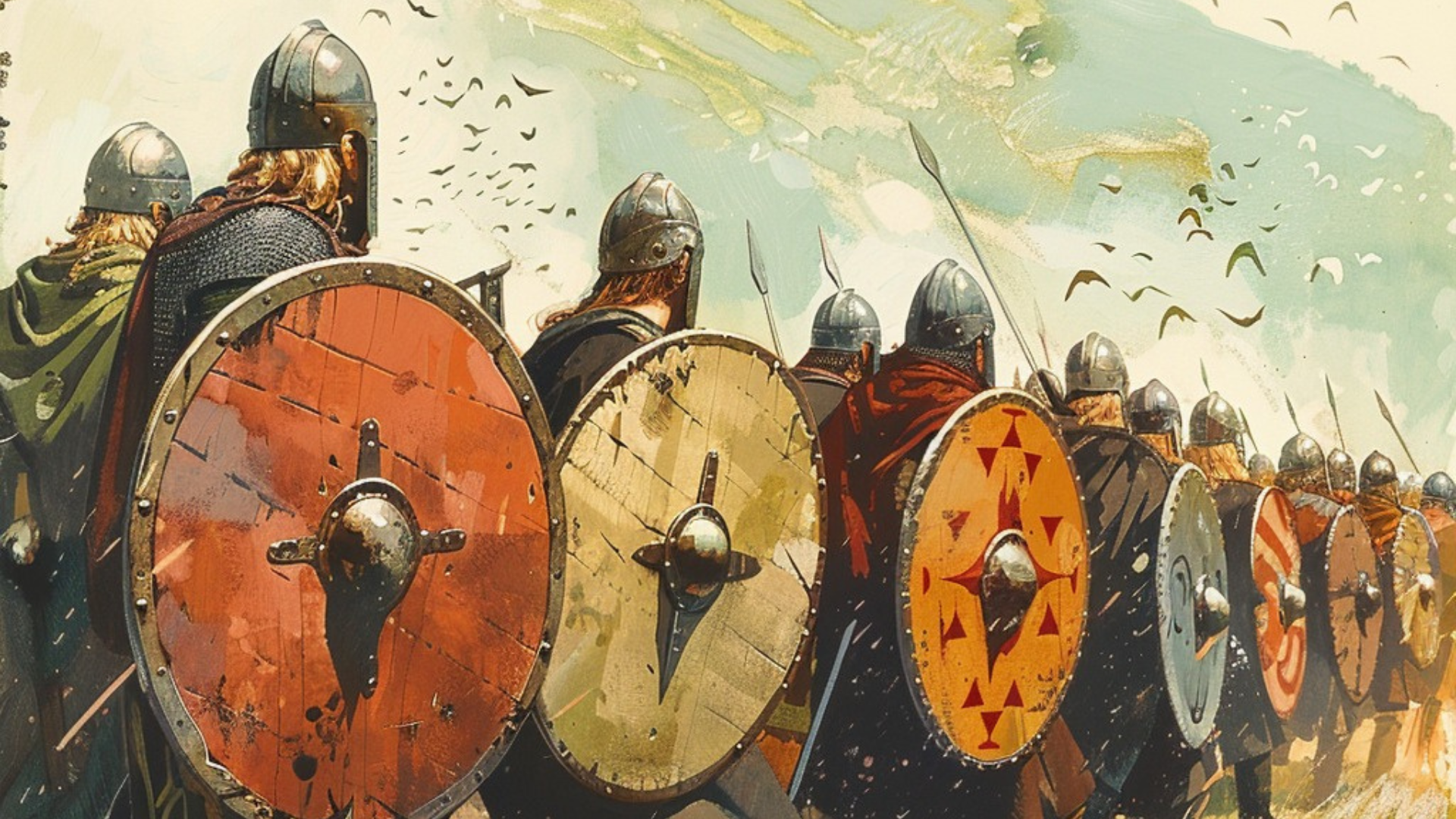
York During the Viking Age: From Ragnar's Sons to Eric Bloodaxe
York, a city in northern England, has a rich and captivating history dating back thousands of years. Among its most fascinating chapters is the Viking Age, when this ancient city fell under the control of the fearsome Norse invaders. Let's delve into the thrilling tale of York during this turbulent yet culturally significant era.
Location and Early History

Pre-Viking York
Before the Vikings arrived, York was already a bustling settlement known as Eboracum, established by the Romans in 71 AD. It served as an important military base and trading hub, strategically situated at the confluence of the River Ouse and River Foss. The city's name evolved from the Anglo-Saxon "Eoforwic" to its modern form, York.
The Viking Invasion

The Great Heathen Army Arrives
In 866 AD, the fearsome Great Heathen Army, a formidable force of Norse warriors, descended upon the kingdoms of Northumbria and East Anglia. Led by the sons of the legendary Viking ruler Ragnar Lothbrok, these invaders quickly overwhelmed the local defenses, paving the way for their conquest of York.
Establishing the Viking Kingdom of Northumbria
After capturing York, the Vikings established their own kingdom, known as the Viking Kingdom of Northumbria. This marked the beginning of an era of Viking dominance in the region, with York serving as the capital and center of power. The city's strategic location made it an ideal base for the Vikings to launch further raids and expand their territorial control.
Life in Viking York

An Important Trade Center
York's strategic location and the Vikings' control over vital trade routes transformed the city into a bustling commercial hub during the Viking Age. Its bustling markets and merchant quarters attracted traders from far and wide, facilitating a vibrant exchange of goods between the Norse lands and the rest of Europe.
Goods and Currency
The markets of Viking York were an epicenter of commerce, where a diverse array of goods changed hands. Merchants dealt in luxurious furs trapped in the northern forests, sought-after amber from the Baltic region, and precious metals like silver and gold. Iconic Viking arm rings, crafted from twisted strands of metal and often used as currency or for barter, were also among the valuable items traded.
York's skilled artisans produced high-quality goods for trade too, including intricate jewelry, finely crafted weaponry, and durable textiles. To facilitate transactions, the Vikings minted their own coins in York, known as "pennies." These silver coins bore designs reflecting the city's heritage, such as Norse symbols or runes. Arm rings and York pennies were widely accepted currencies throughout Viking territories.

Weight scales used for accurate trading, from the Viking age. Found in Gloppen, Western Norway. Exhibited in Bergen museum.
The bustling market scenes would have assaulted the senses with mingled aromas of exotic spices, leathers, and forged metals. Merchants haggled animatedly, showcasing wares as the clink of coin and rumble of wagons provided a lively soundtrack. Beyond economics, these markets were cultural melting pots where travelers introduced new ideas alongside their trade goods.
Traders regaled audiences with tales of distant lands, gradually infusing the local society with diverse influences. It was a true nexus of commerce and cross-cultural exchange, exemplifying the Vikings' far-reaching networks and openness to foreign peoples and traditions.
Architecture and Infrastructure

A Roman road from York to Bridlington, still used today
Homes and Buildings
The Vikings left their architectural mark on York, with various buildings and structures reflecting their unique style. Homes were typically constructed using timber frames and thatched roofs, while grander structures, like the Viking capital's fortifications, incorporated stone masonry. Remains of these ancient structures can still be seen throughout the city today.
Roads and Transportation
To facilitate trade and movement, the Vikings maintained and expanded the existing Roman road network, creating new routes connecting York to other important settlements. The River Ouse also served as a vital transportation artery, with Viking longships plying its waters, carrying goods and warriors alike.
Rulers of Viking York

King Ivar the Boneless
One of the most notorious rulers of Viking York was Ivar the Boneless, a legendary figure known for his cunning and cruelty. According to sagas, he led the Great Heathen Army's conquest of Northumbria and played a pivotal role in establishing Viking control over the region. Ivar's nickname, "the Boneless," is shrouded in mystery, with some speculating it referred to his lack of moral principles or physical disability.
King Eric Bloodaxe
Another prominent Viking king who ruled over York was Eric Bloodaxe, renowned for his military prowess and brutal tactics. He ascended to power in the mid-10th century and engaged in numerous conflicts with neighboring kingdoms, earning his fearsome nickname on the battlefield. Eric's reign was marked by constant warfare and an iron grip on his subjects, solidifying York's status as a Viking stronghold.
Viking Culture and Customs

The Vale of York Hoard
Religious Beliefs
The Vikings brought their pagan beliefs and rituals to York, worshipping a pantheon of gods and goddesses from Norse mythology. Prominent deities like Odin, the all-father and god of wisdom and war; Thor, the thunder god; and Freyja, the goddess of love and fertility, were revered, and their influence can be seen in archaeological finds and place names throughout the region.
Interestingly, before their conversion to Christianity, the Anglo-Saxons had worshipped many of the same gods as the Norse peoples, deities that governed aspects of nature, war, and fertility. In a sense, the Viking presence in York represented a resurgence of the old gods among the populace.

The Gilling Sword
As Christianity gradually took root in the region, an intriguing syncretism occurred between the two belief systems. Many Norsemen found it relatively straightforward to accept the Christian god into their existing pantheon, as their pagan faiths already embraced the concept of multiple deities.
This intersection of religions manifested in fascinating ways. Viking warriors might invoke the favor of Odin before battle while also adopting Christian practices like being baptized. Amulets and jewelry bearing both Norse and Christian symbolism have been uncovered, hinting at the merging of spiritual traditions.
Over time, as the influence of the church grew stronger, the Norse gods gradually faded from official worship. However, their lingering presence can still be detected in the names of days of the week (Thursday for Thor's day, for instance) and the continued observance of certain pagan festivals and rituals, albeit cloaked in Christian symbolism.
Language and Literature
The Viking presence in York also left a lasting impact on the English language, introducing numerous words of Norse origin. Words like "husband," "window," and "skull" all have their roots in Old Norse. Furthermore, the city played a role in the preservation of ancient Norse literature, with sagas and poems being recited and passed down by Viking storytellers.
Decline of Viking York
Conflicts and Power Struggles
Despite their initial dominance, the Vikings' control over York and Northumbria faced increasing challenges from the growing power of the Kingdom of Wessex under the reign of Alfred the Great and his successors. Conflicts and power struggles ensued, with the Vikings battling fiercely to maintain their hold on the city.
York's last great Viking king was Eric Bloodaxe, whose reign was marked by constant warfare against the rising Anglo-Saxon forces. However, after Eric's death in battle around 954 AD, the Vikings' grip on the region began to slip.
Without a strong, unifying leader, internal conflicts and rivalries broke out among the Viking jarls (chiefs) vying for power in Northumbria. This fragmented leadership made it increasingly difficult to mount an effective defense against the relentless Anglo-Saxon advances.
In the years that followed, the Kingdom of Wessex, now ruled by the formidable kings of the House of Wessex, steadily chipped away at Viking territories. By 954 AD, the last Viking stronghold of York finally fell to the Anglo-Saxon forces led by King Eadred.
The loss of York dealt a devastating blow to the Vikings' dominance in the region. What had once been the capital of their mighty Kingdom of Northumbria was now firmly under Anglo-Saxon control, signaling the end of an era. Though pockets of Viking influence persisted, their power and territorial holdings in northern England gradually waned, eclipsed by the growing might of the unified English kingdoms.
Ultimately, the gradual decline of Viking influence in the region was inevitable as the balance of power shifted decisively in favor of the Anglo-Saxons. York's fall marked a turning point, where the Vikings' long chapter as rulers of this ancient city came to a poignant close.
Lasting Impact on York

The Cawood Sword
Archaeological Discoveries
The Vikings' lasting legacy in York is perhaps best exemplified by the remarkable archaeological discoveries made in the city. The Coppergate dig, conducted in the 1970s and 1980s, unearthed a wealth of Viking artifacts, including jewelry, tools, and even preserved everyday objects like combs, shoes, and woodcarvings. These finds provide an invaluable window into the daily lives of these Norse settlers, offering a tangible connection to York's Viking past.
Conclusion
York's Viking Age was a captivating era that left an indelible mark on the city's history and culture. From the conquest by the Great Heathen Army to the establishment of the Viking Kingdom of Northumbria, this period saw York transform into a thriving trade center and a bastion of Norse influence. The legacy of the Vikings in York can still be seen in its architecture, language, and the remarkable archaeological discoveries that continue to shed light on this fascinating chapter of the city's past.
FAQs
- What prompted the Viking invasion of York?
- The Viking invasion of York was spearheaded by the Great Heathen Army, a formidable force of Norse warriors led by the sons of the legendary Viking ruler Ragnar Lothbrok. Their initial target was the kingdoms of Northumbria and East Anglia, which they swiftly conquered, establishing the Viking Kingdom of Northumbria with York as its capital.
- What was life like for the residents of Viking York?
- Life in Viking York was a bustling and prosperous affair, with the city serving as a major trade hub connecting the Norse lands with the rest of Europe. Goods like furs, amber, and precious metals were exchanged, and Viking coins were minted and used as currency. The Vikings also left their mark on the city's architecture, with timber-framed homes and stone fortifications reflecting their unique style.
- Who were some of the notable rulers of Viking York?
- Two of the most infamous rulers of Viking York were King Ivar the Boneless and King Eric Bloodaxe. Ivar the Boneless was a legendary figure known for his cunning and cruelty, and he played a pivotal role in establishing Viking control over Northumbria. Eric Bloodaxe, on the other hand, was renowned for his military prowess and brutal tactics on the battlefield.
- How did the Vikings influence the English language?
- The Viking presence in York had a lasting impact on the English language, introducing numerous words of Norse origin. Words like "husband," "window," and "skull" all have their roots in Old Norse. Additionally, the city played a role in the preservation of ancient Norse literature, with sagas and poems being recited and passed down by Viking storytellers.
- What archaeological discoveries shed light on Viking York?
- One of the most significant archaeological discoveries related to Viking York was the Coppergate dig, conducted in the 1970s and 1980s. This excavation unearthed a wealth of Viking artifacts, including jewelry, tools, and even preserved everyday objects like combs, shoes, and woodcarvings, providing an invaluable window into the daily lives of these Norse settlers.
References
Number 10: The Vale of York hoard" by portableantiquities is licensed under CC BY 2.0.
"Treasures from Medieval York - The Gilling Sword" by vintagedept is licensed under CC BY 2.0.
"Viking weight scales" by arnybo is licensed under CC BY-SA 2.0.
"Treasures from Medieval York - The Cawood Sword" by vintagedept is licensed under CC BY 2.0.








